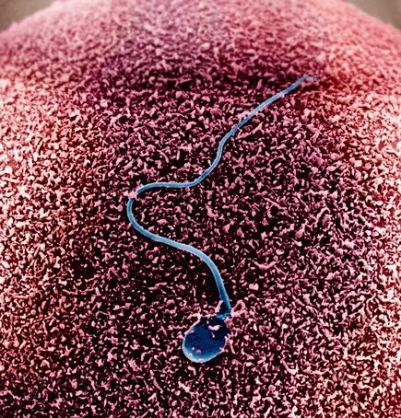A new three-dimensional, lens-free imaging technique has provided the first evidence of spiraling movements that had previously only been inferred from two-dimensional data.

Image by David Phillips, Visuals Unlimited
The study, published in the Proceedings of the National Academy of Sciences, describes the first large-scale, high-resolution recordings of human sperm in three dimensions, which tracked 24,000 cells over the course of the study. Human sperm heads are just 3–4 micrometers long and can only be seen under high magnification, but the cells zoom around at up to 100 micrometers per second, ducking in and out of focus or darting out of range in an instant.
“Our intention was to create something not bounded by conventional optics. This is the first observation of something that was entirely hidden.” says Aydogan Ozcan, a bioengineer at the University of California, Los Angeles, who led the study.
The research team watched the —obtained from a sperm bank— sperm not with a conventional microscope lens, but with a light-sensing chip — measuring about 4 by 6 millimeters — placed underneath the translucent samples. The team placed sperm on the silicon sensor chip and shone one red and one blue light-emitting diodes (LED) from different directions onto the sperm to track their movements and plot each sperm’s path in 3D.
The vast majority of the sperm followed a “typical” path— a slightly curved line. A small fraction — 4–5% — traveled in near-perfect spirals, forming helices between 0.5 and 3 micrometers in radius. Most of the helices were right-handed, but Ozcan says that it is too early to know whether this preference serves any physiological function.
The method tracks only sperm heads, so can’t capture the complex tail movements that are crucial to understanding sperm function — and dysfunction. The skinny tails, which can measure less than half a micrometer across, would require improvements to the imaging technology, says Ozcan. But, he says, “it’s definitely possible”.
The scientists do not yet know what the differences in different swimming styles mean but it’s obviously not a run to the finish line.
N.

